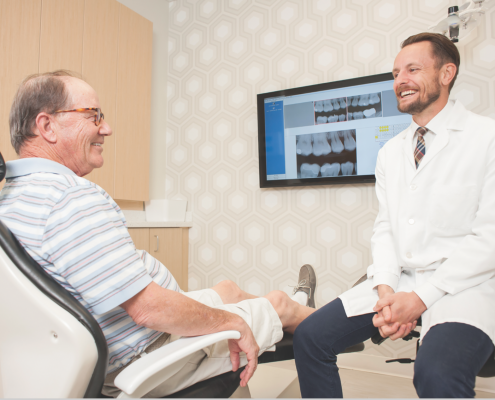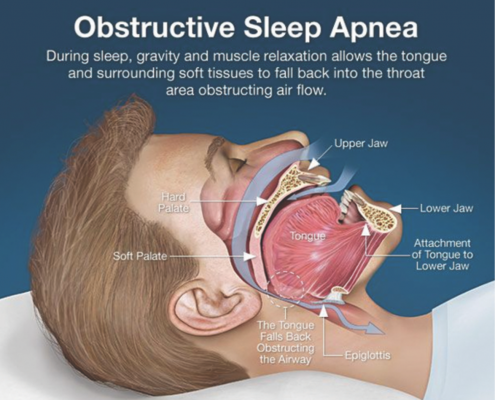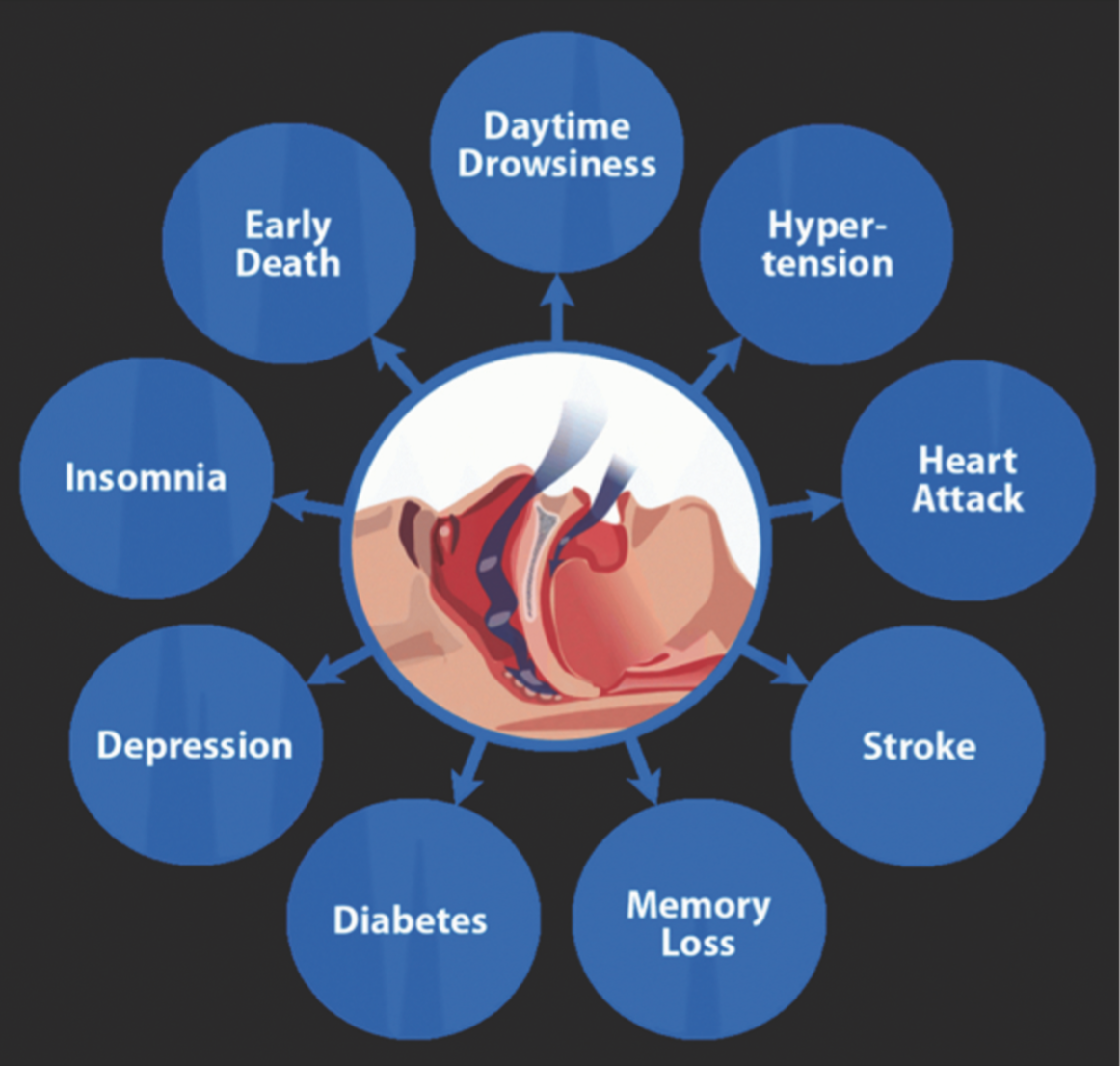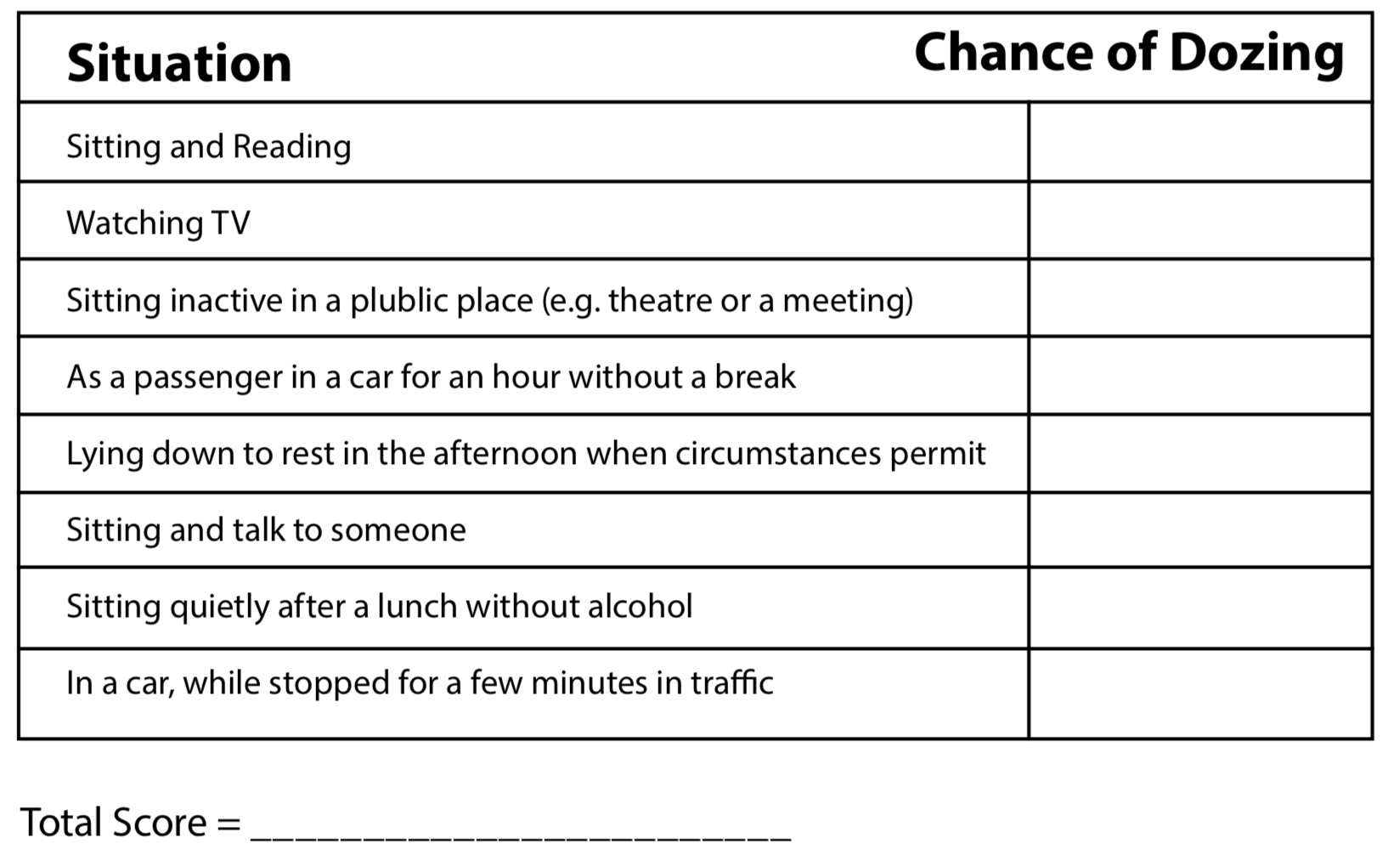 What is Obstructive Sleep Apnea?
What is Obstructive Sleep Apnea?
Obstructive sleep apnea (OSA) is a chronic condition that occurs when your muscles relax during sleep, allowing soft tissue to collapse and block the airway (Obstructive Apnea). As a result, breathing pauses occur, which often increases your carbon dioxide levels and reduces oxygen levels causing a disruption in deep/REM sleep cycles (arousal). This disruption has serious health consequences.
• 17-20% of adults have OSA
• 1 in 4 men and 1 in 10 women
• 50% of men over 50 have sleep apnea
• 80-90% are undiagnosed
• More common than diabetes or asthma
• Occurs in children and is often quickly alleviated by tonsil removal
What Health Risks Can Be Associated With Obstructive Sleep Apnea (OSA)?
• Stroke:
o Men are 3 times more likely to have a stroke with moderate to severe sleep apnea
o OSA is often found in patients following a stroke
o The risk of stroke increases with the severity of the disease.
• Heart
o Hypertension
• Leading cause of secondary hypertension
o 25% increase in Coronary Artery Disease
o Cardiac Arrhythmias
• 4 times more likely to have atrial fibrillation
o Congestive Heart Failure
• Moderate OSA increased mortality  rates
rates
• Nearly all new patients diagnosed with congestive heart failure are screened for OSA
o A 38% increase in heart disease
o OSA sufferers have a 30% increase of heart attack or premature death
• More than 50% of sudden deaths from OSA occur between 10 PM and 6 AM
o Some estimate that medical costs could be reduced by half with properly diagnosed and treated sleep apnea.
• Poor Sleep Increases risk for:
o Mood Disturbance
• Depression
• Anxiety
• Loss of motivation
• Short attention Span
• Moodiness and bad temper
• Poor judgement
 o Daytime Sleepiness
o Daytime Sleepiness
• 6 times increase for traffic accidents
• Impaired concentration and memory loss
• Reduced Work Efficiency
• Reduced alertness
• Slower Reaction Time
• 58% of Type 2 Diabetics have OSA
• Obesity
o There is a direct relationship between sleep apnea and a feeling of hunger
o 90% of obese males and 50% of obese females have OSA
o BMI often contributes to the severity of OSA
• OSA present in 60% of Gastric Reflux Patients
• Loss of Libido
• Frequent Night time Urination
How do you know if you may have Obstructive Sleep Apnea?
We use health history and screening tools like The Epworth Sleepiness Test and the STOP BANG questionnaires to explore your risk but the only way to be accurately diagnosed with obstructive sleep apnea is by doing a sleep study and having the results evaluated by a trained physician.
Epworth Sleepiness Test
•0= No chance of dozing • 1=Slight chance of dozing • 2=Moderate chance of dozing • 3=High chance of dozing
Write down the number corresponding to your choice in the right hand column. Total your score below.

Interpretation:
0-7: It is unlikely that you are abnormally sleepy. 8-9: You have an average amount of daytime sleepiness. 10-15: You may be excessively sleepy depending on the situation. You may want to consider seeking medical attention. 16-24: You are excessively sleepy and should consider seeking medical attention.
 One of the biggest frustrations we’ve seen over the years is follow through regarding sleep center attendance for sleep studies. We still encourage the attendance of a sleep center but now have an alternative approved take home sleep study device here at Jones Family Dental. This device is able to provide the necessary data for a sleep physician to read and interpret for a diagnosis. As a dentist it is completely inappropriate for me to diagnose sleep apnea without a physician. A sleep physician in coordination with the patient’s general practitioner is the gold standard for diagnosis and treatment of sleep apnea. The use of a snore guard is only appropriate if apnea has been ruled out through a sleep study as snoring is NOT the best measure of apnea events.
One of the biggest frustrations we’ve seen over the years is follow through regarding sleep center attendance for sleep studies. We still encourage the attendance of a sleep center but now have an alternative approved take home sleep study device here at Jones Family Dental. This device is able to provide the necessary data for a sleep physician to read and interpret for a diagnosis. As a dentist it is completely inappropriate for me to diagnose sleep apnea without a physician. A sleep physician in coordination with the patient’s general practitioner is the gold standard for diagnosis and treatment of sleep apnea. The use of a snore guard is only appropriate if apnea has been ruled out through a sleep study as snoring is NOT the best measure of apnea events.
Once a patient is diagnosed and treatment recommendations are made by the sleep physician and/ general physician then a consultation regarding best practices can be scheduled. Multiple treatments may be employed to treat obstructive sleep apnea with severity of the diagnosis, patient preference, GP preference, and other findings contributing to the decision. Here are some of the treatments that are often utilized.
• Lifestyle Changes
o Weight Loss
o Smoking cessation
o No alcohol prior to bed
• Better Sleep Hygiene
o 8 hrs of sleep
o No electronics in the bedroom
o Hot bath cold room
o White Noise
o Dark Room
o Possibly positional management
• Devices that help you stay off of your back
• Surgery to Open the airway
o For adults this is rarely used as a first treatment choice
o For children this IS often first treatment choice as tonsils
are often enlarged and easily removed
• Numerous behavioral and developmental problems are associated with untreated sleep apnea in children
• CPAP or BiPAP
o This is sometimes the ideal treatment for severe cases in adults
o A positive air pressure device that is nearly 100% effective at treating OSA when used
o It is not always tolerated well and compliance is the main issue
• Oral Appliance
o For Mild to moderate OSA an oral appliance is usually the first option for treatment
• Excellent Compliance
The biggest hurdles to my patients following through with treatment for their obstructive sleep apnea issues are:
• Lack of understanding
o Which we are addressing with our Sleep Apnea consultations and physician coordination as well as this article
• Follow through with the sleep study
o After consultation some will see the value regarding this much needed test and they will go to a sleep center
• For those who will not go to a sleep center now that we offer an inexpensive take home sleep study device, we can improve follow through in this area
• Cost
o CPAPs and Oral appliances devices are quite expensive and utilizing medical insurance is a huge benefit to patients
• One thing that may be unique with our office is that although we are a dental office, we utilize your health insurance to provide this treatment
• We bill your health insurance
• This could translate to thousands of dollars of savings for the patient
When I think back to the last years of my grandfather’s life I can’t help but to wonder if things would have gone differently had he been properly diagnosed and treated for Obstructive Sleep Apnea. We will be working with our patients and physician partners to identify risk, educate, diagnose, and treat obstructive sleep apnea. If you identified that you or your loved ones may be at risk for obstructive sleep apnea here are a few options: mention this article to them, talk to your physician, talk to your dentist, or simply give us a call to schedule a consultation appointment.
Ask for DeAnna at 541-488-5088.